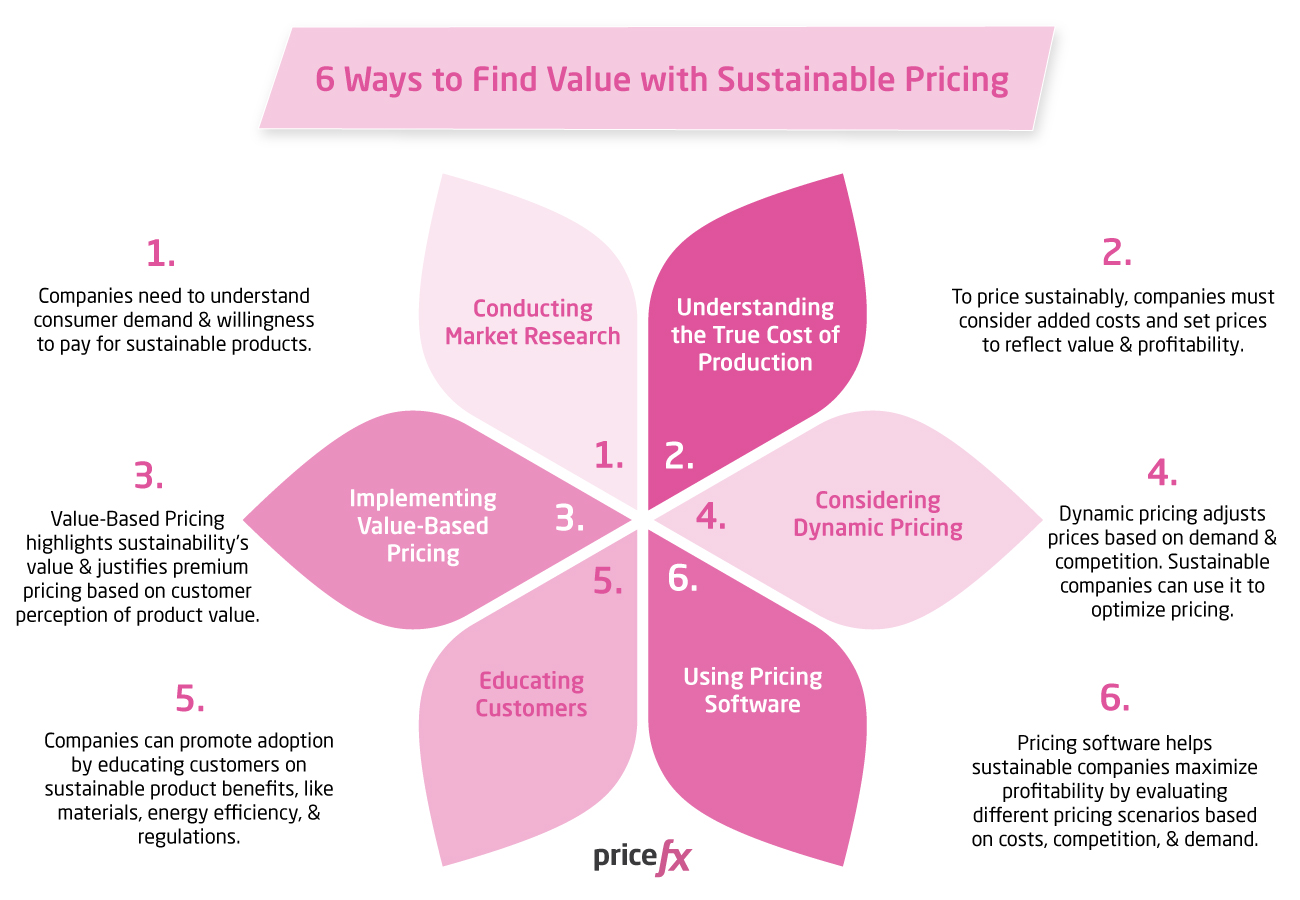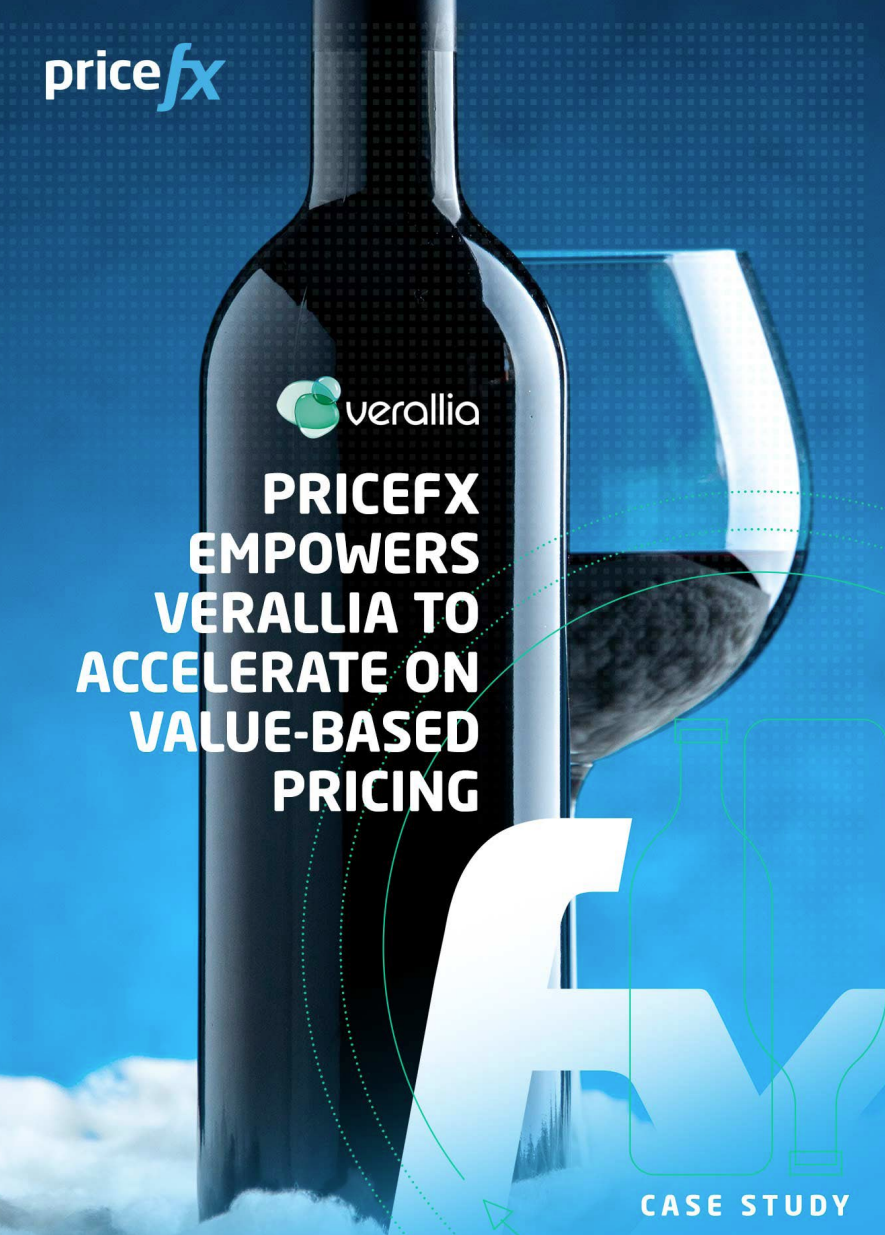Finding Value for Your Business with Sustainable Pricing
April 18th, 2023 | 11 min. read
As more consumers prioritize environmentally friendly products, an increasing number of businesses across the globe are finding value for their organizations through sustainable pricing. However, it is not simply about appealing to eco-conscious customers. If it were that simple, we arguably would have already significantly lessened human impacts on the environment by now. To get it done, there is no choice and there is no gentle way to say this, sustainability must make money. But along the way, by implementing sustainable pricing strategies, businesses can also benefit from increased efficiency, reduced waste, and improved reputation. In fact, according to a recent study, 66% of consumers are willing to pay more for products that are sustainably produced. But beyond the benefits to the bottom line, businesses can also use sustainable pricing as a tool to tackle a unique pain point: the rising cost of resources. With traditional resources becoming scarcer and more expensive, sustainable pricing can offer businesses a way to stay competitive while reducing their environmental impact.
For the past 12+ years, Pricefx has been leading the way in assisting businesses with their product pricing strategies. Through the utilization of advanced pricing software and analytics, Pricefx has enabled companies to simplify their pricing procedures and base their decisions on data. As a result, businesses can ensure that all their products, including those that are sustainable, are accurately and competitively priced. With its state-of-the-art technology and exceptional proficiency, Pricefx remains a reliable ally for companies aiming to price their eco-friendly products efficiently and lucratively.
In this article, straight out of the gates we will run through an understanding of what sustainable pricing is, what it entails, and explain how pricing software can help you achieve it before looking at 6 methods to help you find value for your business with sustainable pricing.
Understanding Sustainable Pricing
Sustainable pricing is the practice of setting prices for products that reflect the environmental and social costs associated with production. This includes costs such as the use of sustainable materials, reduced energy consumption, and compliance with environmental regulations. Sustainable pricing is essential for companies that want to support sustainable practices while remaining competitive in the modern and evolving marketplace.
However, like with most pricing matters, sustainable pricing is not easy and solutions to implement require a lot of hard and determined work. Sustainable pricing requires a deep understanding of the genuine cost of production, including the costs associated with sustainable practices. This understanding enables companies to set prices that accurately reflect the value of sustainable products while remaining profitable.
For example, a company that uses recycled materials in its production processes may incur higher production costs.
Still, the use of recycled materials also provides environmental benefits that can be reflected in the price of the product.
Additionally, sustainable pricing requires an understanding of consumer demand and preferences for sustainable products. That understanding usually comes through unlocking of, and insights determined by the data that rests in most organization’s CRM (Customer Relationship Management) or ERP (Enterprise Resource Planning) or other systems. Of course, it is even better if that data is given an extra nudge along by pricing software.
Pricing software can help companies educate consumers about the value of their sustainable products.
By highlighting the environmental benefits and added value of sustainable products, companies can justify premium pricing and increase consumer awareness and adoption of sustainable products.
Consumers are increasingly concerned about the environmental impact of the products they buy, and companies that offer sustainable products can capitalize on this trend by setting prices that reflect the added value of sustainability.
Using Sustainability to Fight Rising Resource Costs
As the cost of a finite number of natural resources continues to rise, businesses are facing the pain point of rising resource costs that can affect their bottom line. However, by implementing sustainable pricing strategies, companies can take a proactive approach to mitigate these challenges.
By prioritizing sustainable materials and processes, companies can reduce their reliance on scarce and expensive resources, leading to cost savings and improved businesses efficiencies.
For example, using recycled materials in product manufacturing can help reduce waste and limit the need for raw materials, thereby minimizing expenses and lowering overall production costs.
And hey, if you have a bank of solar panels on the roof of your production plant and you are using some of those electricity savings on investing in the research and development of batteries to store that energy in the future or on-sell it, that will not hurt your long-term bottom line either!
What’s more, sustainable pricing can also help businesses remain competitive in a rapidly changing market. Consumers are increasingly conscious of the environmental impact of their purchases and are willing to pay a premium for eco-friendly products.
By pricing sustainable goods accurately and competitively, businesses can appeal to this growing market and increase their market share. As an increased number of companies prioritize sustainability, those that fail to do so risk being left behind, both in terms of sales and public perception. By embracing sustainable pricing, businesses can not only reduce their environmental impact but also stay competitive in an evolving marketplace.
Using Pricing Software to Enable Sustainable Pricing
Using pricing software to enable sustainable pricing can help businesses uncover value they never knew they had. Pricing software can analyze a wide range of data points to identify areas where businesses can reduce costs, improve efficiency, and increase profits, all while prioritizing sustainability.
Take any technology company, for example, a computer parts and microchip manufacturer and vendor of networking equipment that may even have its own proprietary pricing software or work together with a pricing software vendor.
By leveraging their pricing software and analytics, the technology company can analyze product demand and customer behavior data to identify opportunities for reducing waste and optimizing inventory levels.
For instance, the technology company can use its pricing software to identify which products are most in demand and adjust inventory levels accordingly to reduce the risk of overstocking or understocking.
When companies have excess inventory, they sometimes resort to holding on to that stock with the hope that the products will eventually sell. However, this can be problematic since the slow-moving inventory usually is way more expensive to hold and manage. Additionally, products that have a short shelf life, including raw materials and ingredients, are at greater risk of becoming useless inventory if they are not sold as quickly as expected.
By reducing excess inventory, companies can minimize waste and improve their environmental impact. Additionally, by analyzing customer behavior data, companies can adjust pricing strategies in real-time to remain competitive, appeal to sustainability-minded customers, and find new ways to create value and operate more efficiently.
Beyond operational improvements, using pricing software to enable sustainable pricing can also enhance a business’s reputation and strengthen customer relationships. As sustainability becomes an increasingly principal factor in purchasing decisions, businesses that can demonstrate their environmental commitment are more likely to win customer loyalty. By incorporating sustainability criteria into their pricing strategies, businesses can not only appeal to eco-conscious consumers but also differentiate themselves from competitors.
What’s more, by providing pricing software powered ‘clear box’ transparency around the environmental impact of their products, businesses can build trust with their customers, creating a loyal customer base that is likely to return for repeat purchases.
6 Ways to Find Value with Sustainable Pricing
Finding value with sustainable pricing requires companies to balance the costs of sustainability with the potential benefits. Here are some strategies that companies can use to find value with sustainable pricing:

1. Conducting Market Research
To find value with sustainable pricing, companies need to understand consumer demand and preferences for sustainable products. This includes identifying the willingness of customers to pay a premium for sustainable products.
For example, a company that produces home cleaning products can conduct market research to understand the demand for eco-friendly cleaning solutions, the willingness of consumers to pay a premium for such products, and the most effective ways to communicate the environmental benefits of their products to consumers.

By analyzing this data, the company can develop and market sustainable products that meet the needs and desires of environmentally conscious consumers, while also reducing their environmental footprint and gaining a competitive advantage in the market.
2. Understanding the True Cost of Production
To set prices that accurately reflect the value of sustainable products, companies need to understand the genuine cost of production, including the additional costs associated with sustainable practices. This understanding enables companies to set prices that reflect the added value of sustainability while remaining profitable.
3. Implementing Value-Based Pricing
Value-based pricing is a pricing strategy that sets the price based on the perceived value of the product to the customer. Companies can implement value-based pricing for their sustainable products to emphasize the value proposition of sustainability and justify premium pricing.
To learn more about a real-world value-based pricing scenario for an eco-friendly and sustainable company, check out the case study below for how Pricefx enabled Verallia (the world’s third largest producer of glass packaging for beverages and food products and experts in its design, manufacture, and recycling) extend a value-based pricing methodology across their entire business.
4. Considering Dynamic Pricing
Dynamic pricing adjusts the price of a product based on real-time demand, competition, and other factors. Companies can consider implementing dynamic pricing for their sustainable products to optimize pricing based on changing market conditions.
One real-world example of a company implementing dynamic pricing for their sustainable products is Tesla. In addition to being a leading electric vehicle manufacturer, Tesla has implemented dynamic pricing for its solar panels and batteries. The company’s pricing strategy is based on factors such as customer demand, weather patterns, and changes in the cost of materials.
For example, during peak hours of electricity usage, when demand is high, Tesla’s Powerwall batteries are priced higher to encourage customers to save energy during off-peak hours. Similarly, during periods of high demand for solar panels, Tesla adjusts its prices accordingly. This dynamic pricing model allows Tesla to optimize its pricing based on changing market conditions, while also encouraging customers to adopt sustainable energy solutions.
5. Educating Customers
Companies can educate customers about the added value and environmental benefits of their sustainable products to justify premium pricing and promote customer adoption. This includes providing information about the use of sustainable materials, reduced energy consumption, and compliance with environmental regulations.
6. Using Pricing Software
As mentioned above, pricing software can help companies set fair and profitable prices for their sustainable products by providing advanced analytics, optimization tools, and scenario planning capabilities.
Scenario planning is a tool that enables companies to model different pricing scenarios and evaluate their impact on profitability. Pricing software can help companies create different pricing scenarios for their sustainable products, considering varied factors such as changes in production costs, competition, and demand. By modeling these scenarios and/or price list simulations, companies can make informed pricing decisions that maximize profitability.
Learn more about price list simulations in the handy video below:
.
Looking Ahead with Sustainable Pricing
Now you know that approaching sustainability pricing as a business opportunity rather than a problem to overcome is key to implementing in your business. Generally, the companies that are the most successful in implementing sustainable pricing are those that base their thinking or even business objectives on the value that they stand to create (or protect) through their handling of sustainability issues. They set tangible, concrete aspirations for their sustainability programs, convert those aspirations into their overarching business goals, reflecting their competitive position, their consumers’ expectations, and they use pricing software to get there.
With its advanced pricing optimization and management capabilities, pricing software like Pricefx can help large scale enterprise business simultaneously achieve both their sustainability and business goals concurrently and stay ahead of the curve as ‘green pricing’ transitions from a niche ‘nice to have’ into an essential business component.
Irrespective of your business’s stance on sustainable products, sustainable pricing can provide immense value. By utilizing pricing software, you can gain the capability to swiftly recognize market trends, adapt pricing techniques as needed, make informed decisions based on data, maintain a competitive edge, and establish a comprehensive pricing strategy. For further insights, refer to the informative article below which explains how to implement a value-based pricing approach:
Or if you would like to learn more specifics on how our pricing software solution could help your business achieve its goals, talk to one of our experts now.



